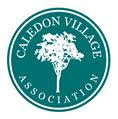Our Events
Gravel Pits
CbM (St. Marys and Humeniuk) "Information" Campaigns
Ladies and gentlemen, CBM (St. Marys and Humeniuk) has
scheduled so-called online “Information” campaigns for March 9, 10 and 11, 2021. Residents and members of Caledon Council that intend to attend the online “Information” campaigns should be made aware
of what St. Marys and Mr. Humeniuk (principal of TPC Osprey Valley Golf Course) have been up to during the past two decades in their collaborative effort to launch three blasting quarries below the
water table. They have assembled massive amounts of land, which they plan to destroy and cause untold damage to the environment, and negatively impact the lives of countless people, compromising
their health and safety, their quality of life, and reducing the value of their properties.
· St. Marys
assembly in the SW quadrant of Charleston Sdrd and Cataract Rd consists of 285.76 acres, of which 47.216 acres are within the Settlement Area of the Hamlet of Cataract (All 47.216 acres are also
within the Niagara Escarpment Plan). In 1980, although the availability of water was an issue, subdivision approval was granted for a 34-acre parcel (within the hamlet), but the approval had lapsed
three years later in 1983. (See attached documentation). In 2003, when St. Marys bought the 186-acre parcel, which includes the 47 acres within the Settlement Area, the parcel was registered in
a numbered company to conceal the true ownership of the parcel, and with full knowledge that 47 acres are within the Settlement Area, as disclosed on the MLS listing. (see attached particulars of
2003 acquisition)
· Humeniuk
(Owner of TPC Osprey Valley Golf Course) entered into a 35-year Lease and Royalty Agreement with St. Marys Cement Inc. from July 4, 2019 to July 3, 2054 for 413.56 acres, consisting of 323.41 acres
(west of Main St) and 90.15 acres (east of Main St), with St. Marys Cement Inc. granted a first right of refusal. (see attached ownership details)
· John Henry
McClellan sold 100.26 acres at the northeast corner of Charleston Sdrd and Mississauga Rd to St. Marys Cement Inc. on December 11, 2020, with a right of first refusal to purchase the property
on the earliest of 20 years after the date of this Agreement, the date on which SMC obtains a licence under the Aggregate Resources Act or the death of McClellan. (see attached ownership
details)
St. Marys and Humeniuk have acted as if the process of
obtaining a licence under the Aggregate Resources Act is a fait accompli, even though no rezoning and Official Plan applications have been filed.
Mr. Humeniuk has massive land holdings in the area as shown
of the “Proposed Modifications to Schedule A for the Osprey valley lands,” to which he more recently added 18970 Main St (197.20 acres) and 19370 Main St (101.76 acres). See attached acquisition
particulars. Quarries blasting below the water table are not compatible with Mr. Humeniuk’s plans to expand the nearby TPC Osprey Valley golf course with a new clubhouse, cottages or villas,
and a conference centre. Blasting quarries and golfing don’t mix!
Mr. Humeniuk and St. Marys have spent the past two decades
assembling land with the intention of establishing three quarries blasting below the water table in the following locations:
· Southwest
quadrant of Charleston Sdrd and Cataract Rd (southerly extension of Main St)
· Northeast
quadrant of Charleston Sdrd and Main St (northerly extension of Cataract Rd)
· NW
quadrant of Charleston Sdrd and Main St, extending to Mississauga Rd
Of course, no well-informed or well-advised person would
ever purchase a home or business (or want to be near) a quarry blasting below the water table:
· Who would
possibly want to golf next to a blasting quarry and be exposed to noise, airblast (overpressure), ground vibration, fugitive dust, and possibly sustain injury or death from flyrock? Flyrock is a
phenomenon of blasting rock, and can be launched great distances from the site of the blast. I documented 92 flyrock incidents, where the travel distances were known, and some flyrock travelled in
excess of 2,500 metres (2.5 kilometres). Attached is a Flyrock Power Point presentation prepared by Mr. Hill, P.Eng. that graphically illustrates the dangers and devastating consequences of flyrock.
(also see Blasting Regulations Changes & Flyrock, 2009, which shows and describes seven flyrock incidents, Slides
14-17, https://dmme.virginia.gov/dmm/PDF/TRAINING/REFRESHER/lawchanges/ARBlastingRegChanges2009.pdf)
· Who would
possibly want to reside or conduct business near a blasting quarry, and be exposed to noise, airblast (overpressure), ground vibration, fugitive dust, and possibly sustain injury or death from
flyrock?
· Who would
want to expose their children, pets or family members suffering from Post Traumatic Stress Disorder (PTSD) to the terrifying sound of repeated blasting?
· Who would
want to endure the adverse effects, including repeated blasting, of a blasting quarry for the next 35 years (or more)?
· Who would
possibly want to drive (e.g., school bus, passenger vehicle, delivery trucks) or cycle or walk by a blasting quarry and risk being showered by flyrock debris and fugitive
dust?
· Who would
possibly want to be exposed to the increase in truck traffic and the accidents that inevitably follow?
· Who would
possibly want to visit any tourist or recreational facilities near a blasting quarry, which is hardly conducive to expanding Caledon’s growing tourism industry?
· What
municipality would expect to have its property tax base destroyed by blasting quarry operations, which pay taxes at an acreage rate consistent with low quality farm land rather an acreage rate based
on industrial use?
· Why should
the homeowners and other businesses in Caledon be expected to absorb the loss of realty taxes occasioned by blasting quarry operations?
· You won’t
be able to enjoy backyard social gatherings, your pool or have an outdoor barbeque, do yard work, hang laundry out to dry, plant an organic garden/farm, or allow livestock (or pets) to graze on grass
covered with fugitive dust, potentially toxic.
· Residences
within a considerable distance of blasting quarry operations sustain a significant loss in property value. Studies have shown that each residence within approximately one mile (1,600 metres) losses
in the range of 20% to 30% of its value. The loss in property value can be attributed to a host of factors (lack of marketability, inability to obtain mortgage financing on favourable terms and
conditions, loss of potable water, potential subsidence from dewatering, exposure to repeated blasting, exposure to flyrock and fugitive dust, loss of use and enjoyment of outdoor amenity space,
reduced quality of life, etc.)
Certainly, the intersections of Main St/Catarart and
Charleston Sdrd, and Mississauga Rd and Charleston Sdrd are not appropriate locations for quarries blasting below the water table. Residents of Alton, Cataract, Coulterville, Brimstone, Belfountain,
Inglewood and Cheltanham have cause for concern, as does everyone who enjoys the many recreational amenities in the area:
·
Forks-of-the Credit Provincial Park and the Cataract Falls
· The Alton
Grange
· Caledon
Ski Club
· Caledon
Mountain Trout Club
· Credit
River (https://cvc.ca/wp-content/uploads/2012/06/credit-river-fisheries-mgmtplan.pdf)
· Elora
Cataract Trailway
· Bruce
Trail and Niagara Escarpment
·
Belfountain Dam, Headpond and “Yellowstone Cave” – Belfountain Complex (see Belfountain Dam & Headpond, Environmental Assessment,
2017, https://cvc.ca/wp-content/uploads/2017/02/Environmental-Study-Report.pdf and Belfountain Conservation Area Management Plan,
2018, https://cvc.ca/wp-content/uploads/2019/01/Belfountain-CA-draft-mgmt-plan-Dec2018-draft.pdf)
· Woodlands
and Significant Wildlife (see 2009 Woodlands and Significant Wildlife Habitat
Study https://www.peelregion.ca/planning/officialplan/pdfs/Peel-CaledonSW-SWH-Study-Report-Part4.pdf)
Source water protection is also an extremely important issue
where quarrying and blasting are below the water table, especially in karstic environments and in areas with a high water table, where dewatering is required 24 hours/day forever. (see Applied
Research on Source Water Protection Issues in the Aggregate Industry,
2006, https://ossga.com/multimedia/31/2006-applied_research_on_swp_issues_in_the_aggregate_industry-blackport_and_golder.pdf and Hydraulic Impacts of Quarries and Gravel Pits,
2005, https://files.dnr.state.mn.us/publications/waters/hdraulic-impacts-of-quarries.pdf)
“Groundwater is…an important regional resource. Not only
does this resource supply drinking water, it also serves a vital role in maintaining ecosystem integrity. In the Town of Caledon, groundwater aquifers are the primary source for private and municipal
water supplies not serviced by the lake-based system supplied by Lake Ontario.” “Surface water is water that collects on the land surface (i.e., wetlands) or in a stream, river, lake,
reservoir….Surface water is constantly replenished through precipitation, and lost through evaporation and seepage into ground water supplies (See Figure 3 Peel Regional Official Plan).
Stormwater is produced from precipitation in the form of runoff from rain or snow. Stormwater runoff is managed through a number of different approaches including practices that reduce the rate
and/or volume of stormwater runoff and remove pollutants from runoff generated on development sites.” (see Protecting Water Resources: Roles and Responsibilities Peel 2041 Discussion Paper,
2018, https://www.peelregion.ca/officialplan/review/pdf/water-resources-discussion-paper-roles-responsibility.pdf)
Attached is letter expressing my concerns about the failure
of explosives engineers to address “flyrock” in the preparation of Blasting Impact/Assessments on behalf of the Aggregate industry, emailed four times to the Professional Engineers of Ontario,
without as much as a courteous acknowledgement.
· Blasting
Impact Assessments are proponent-driven, with the sole objective of obtaining municipal and provincial approvals for a blasting quarry operation.
· Blasting
Impact Assessments ignore entirely any acknowledgement or meaningful analysis of flyrock, and the adverse effects on the health and safety of residents (i.e., human targets), including quality of
life and property-value diminution.
· Blasting
Impact Assessments simply reference undefined “sensitive receptors” that may be impacted by vibration and overpressure from blasting.
· Blasting
Impact Assessments are devoid of any concern for human or animal life (pets and livestock).
· Blasting
Impact Assessments fail to mention the potential for ground vibrations from blasting to crack building foundations, and cause basement flooding and formation of mold.
Caledon does not have any blasting quarries within its
borders, and passing a by-law banning them outright would protect all of the citizens of Caledon, including visitors, against flyrock (debris and fugitive dust). A by-law preventing blasting quarries
would also prevent destruction of the environment. Quarries that blast below the water table cause significant hydrogeological problems, as they must be dewatered 24 hours/day forever, and
there is no prospect for rehabilitation after all of the aggregate has been removed.
Alternatively, Caledon could pass by-laws requiring a
minimum quarry setback of 800 metres and not permit any blasting quarries within 1,000 metres of any Settlement area within the Town of Caledon.
· Blasting
quarries destroy the environment, are a major health and safety risk, reduce the quality of life, and are inconsistent with Caledon’s self-proclaimed image as the “Greenest Town in
Ontario.”
Caledon is posed to experience significant population
growth, and tourism is on the rise, given Caledon’s proximity to surrounding communities (Erin, Orangeville, Brampton, Mississauga, Toronto). Caledon’s many outdoor recreational opportunities have
become a magnet for those people seeking refuge from the spread of Covid19 in densely populated urban centres.
Caledon council is responsible for protecting the health and
safety of current and future residents, and to ensure that current and future residents are not exposed to nuisances commonly associated with blasting quarry operations, which the residents would
have to endure for 35 to 40 years! Blasting quarries generate an inordinate number of complaints and potential lawsuits from residents.
If you are not in favour of St. Marys/Humeniuk’s proposed
blasting quarries, please contact Caledon Council members and Planning staff and let them know why. Please feel free to use and circulate this email and the supporting
materials.
Regards, Tony



